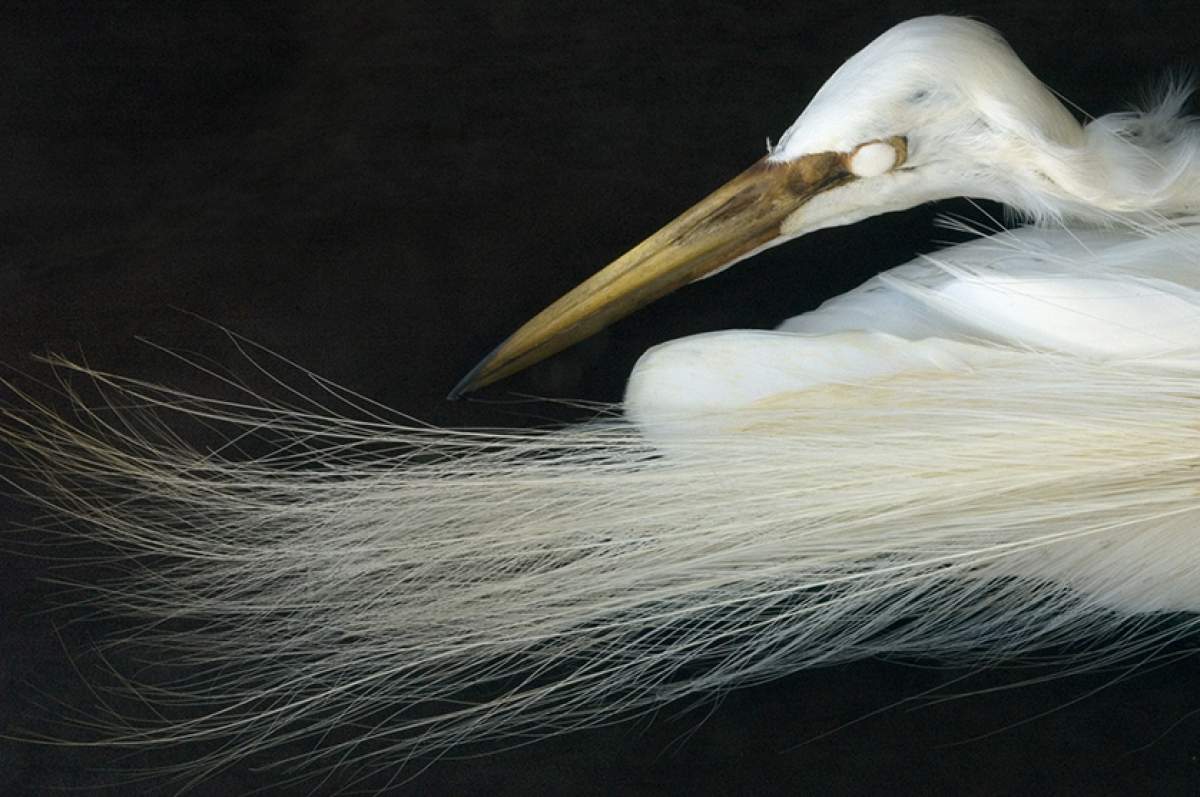
Rosamond Purcell has made a career of taking beautiful photographs of unusual objects in unlikely places.
It's as if you know that behind a door is something, and all you want is to take a good picture.
The Massachusetts-based artist developed a passion for photography more than 40 years ago, when her husband, Dennisalso a photographer and a one-time assistant to Ansel Adamsgave his wife a Polaroid camera as a present.
I took the camera, and became too interested with the result, by which I mean I wasn't getting what I wanted. So when I came home Dennis taught me more about composition, and slowly, slowly, I worked my way toward taking a photograph in which nothing was extraneous.
Purcell started off taking portraits of family and friends, but found that she still wasn't getting what she wanted. Eventually, she hit on the idea of taking pictures of things she didn't like, or was apprehensive about. That's how she began taking pictures of the collections in natural history museums.
Well, I just knew that it was visually attractive and maybe viscerally repellent. But that didn't matter, because you learn the print is an objectified event, and doesn't belong to your soul and your heart. It just exists. And I think that I knew that if I worked with things, no matter how I felt about them, I might get a good photograph.
Purcell photographed all manner of skins, skulls, birds and bats. And the quality of her work soon drew the attention of curators and scientists, including renowned Harvard paleontologist Stephen Jay Gould, with whom Purcell ultimately collaborated on several projects. Over time, she developed a reputation for rendering the "still-lifes" housed in museums, capturing the artistry of the specimens in the back rooms-where the beauty of the natural world was frozen in timesorted and warehoused by museum curators.
But perhaps Purcell's greatest inspiration was found in the unlikely location of Owls Head, Maine. She had traveled there to teach a photography workshop, and asked for directions to a local cemetery and a local junkyard, thinking there would be ample opportunity for good picture-taking. The cemetery didn't pan out. But the junkyard, owned by a man named William Buckminster, turned out to be a gold mine.
And we went to the junkyard, and it looked, from the car, like a yard full of giant dinosaur parts, because of the soaring scrap metal that was there, and it went on for acres and acres.
Purcell and her students clambered over the 13 acres of junk piles, digging amid the ruins and finding buried treasure in the discarded junk.
The colors were extraordinary. And it didn't take me long to see that things that were just ordinary objects had been transformed by the atmosphere into mysterious and beautiful objects.
One object, in particular, caught Purcell's attention on that trip to Buckminster's. Buried deep under a mud-covered tarp was a pile of books, or what looked like books.
One of the things that was found almost immediately when we went was found by a student I was witha book, that had been eaten, half-way through, chewed up half-way through, by mice, or squirrels, and made into a nest. So that it was half-book, half-nest, and I had never seen anything in the world that was such a crossover between the man-made and the natural phenomenon. And I thought it was breathtaking.
Purcell was hooked, and returned again and again to the site she says she began to consider not just a junkyard, but her "art supply store."
Purcell says Buckminster, with whom she developed a friendship over the years, didn't really understand why she bought all the ruined, discarded objects, and would often ask,
Why would you buy this? This is just, you know, this is the kind of thing I'd take to the dump!
Purcell's repeated trips to Buckminster's led her to accumulate many collections, around which she built both a studio and a career. In a way, it was continuing a family tradition, with one significant difference.
Although I had come from a family of collectors, they were collectors of beautiful books, or nice pieces of china. They were collectors of beautiful objects. I had been brought up to think there was a certain kind of beautiful object, and that you wouldn't necessarily want to have something that had been so mistreated by the elements as a crushed china plate, or something that was meant to be valuable or of daily use that had been thrown out.
Purcell's work has been much admired among a relatively small circle, but is now getting wider attention with the release of a documentary film, recently shown at the IU Cinema, titled An Art That Nature Makes. Purcell is grateful for the film, because she says it helps to document the trajectory and coherence of her artistic vision over the past four decades.
I'm very pleased with the results because it gives me a sense that there has been not just one thing after another after another, but rather a pilgrimage from one thought to another to another.
The exhibition that brought Purcell to Bloomington[Re]Imaginaing Scienceis up at Indiana University's Grunwald Gallery through November 16th. [Re]Imagining Science explores the relationship between creative production in the arts and sciences and the interactivity of collaboration. The exhibit contains fourteen collaborative projects by IU artists and scientists, as well as work by Purcell, whom The New York Times called "our greatest living 17th-century photographer". Purcell pursued three collaborations with the late Harvard paleontologist and evolutionary biologist Stephen Jay Gould, resulting in the book Illuminations and two other titles. You can find out more about Purcell's experience with Buckminster's junkyard by reading Purcell's book Owls Head: The Nature of Lost Things.






